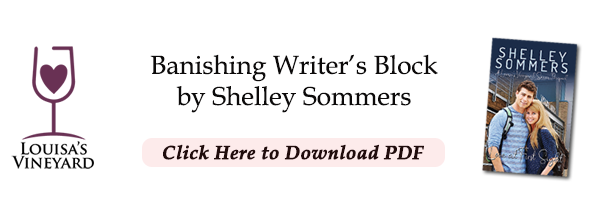WELCOME!
If you’re on this page because you happened to hear about “Banishing Writer’s Block” in a webinar, a friend shared this with you, or you just found it randomly on my website, I welcome you. I don’t promise to solve all of your writing issues. You do need to have a capability to write sentences, turn them into paragraphs, and ultimately sections and/or chapters.
With many years of experience teaching people to write, I know it takes a certain amount of persistence, talent, stamina, and, often a sense of humor, to complete a manuscript or other writing project.
And why do I have the chutzpah (guts) to tell you how to write or succeed in your writing?
1. I’m an objective third-person, who won’t just say it’s wonderful because I’m a friend or relative. I’m honest, but not hurtful.
2. I’ve got credentials. A permanent English teaching degree from New York State, and a B.A. in English from Vassar College, of which I’m very proud. (They don’t give out an “A” gratuitously, you must earn it. “B’s” are rare and a thrill to receive. There was a story that a student in the English Department received an “A” and a party was held to celebrate.)
As a journalist, I received awards for my writing. As a screenwriter, I helped my husband, on his first-time entering Francis Ford Coppola’s “American Zoetrope” screenwriting contest, land fourth place with thousands of others competing. I was also a finalist in a screenwriting contest.
3. Now that I’m done “wowing” you, what can you learn from “Banishing Writer’s Block?”
This is what I learned from my adviser and teacher:
a. Tell them what they’ll learn.
b. Give stories and examples to make your case and
c. Sum up what they’ve learned.
4. Simply, I’ll help you think through the elements you need to have in place before you even sit down to write. (You are welcome to use a stand-up desk, but do move around, sitting or standing. You need to keep your blood flowing and limber up your body. It helps creativity.)
Before you begin to write, research is helpful so you can write smoothly with details in mind. Know your characters, settings/locations, time period, just to start. As you add details for secondary characters and plot, you might need to do further research later.
Make your work location as comfortable and distraction-free as you can. Chair, desk height, sufficient light, computer functioning, etc. Laughingly, a “Do Not Disturb” sign could be posted on your closed door, with exceptions of: fire, flood, and nuclear attack.
5. On to the actual work!
a. Outline if that’s your approach, or write something out for reference that tells what and who the book is about. What’s your beginning, “inciting incident,” and resolution? (These can be modified. Don’t get stuck if you find yourself changing things along the way. Just make sure you don’t create “plot holes” or illogical actions.)
b. Start the first sentence in a way that will be attention-getting. DON’T start, “John heard his alarm go off and hit the snooze button.” Boring!
In screenwriting, you learn to jump in as if the beginning has already happened. Show, not tell, what’s happening. Is your lead character hung over, sleep-deprived, nervous about a test, scared because they had a big fight with their significant other (who left) and they’re not sure what to expect? Other than obvious reactions, have them react in original ways: do the unexpected. Leave town. Call their friend and ask them to go to the movies after work. Go on a picnic with your kids. Have your character think about what they really hoped for in life and do it! Brash, crazy, or dutifully go about their regular routine until they explode!
c. Summing up: Put your groundwork effort in, do the work and write, then pull all the threads together so readers feel satisfied. You can leave some things for readers to question, especially if you’re writing a series. And, NO! Unless you’re writing about a character who speaks with an accent, or in slang, or with foreign words, keep the writing in clean sentences. Now, see the summation of what I’ve suggested to banish writer’s block. Some of the best writing I’ve seen is short. When you’ve finished your writing for the day, I recommend reading one of my favorite short stories. Only four pages long, it has a real twist at the end, which can leave a reader surprised, laughing, or frightened. By Saki, I suggest reading “The Open Window.” It’s powerful!
Now, see the summation of what I’ve suggested to banish writer’s block. Some of the best writing I’ve seen is short. When you’ve finished your writing for the day, I recommend reading one of my favorite short stories. Only four pages long, it has a real twist at the end, which can leave a reader surprised, laughing, or frightened. By Saki, I suggest reading “The Open Window.” It’s powerful!
Banishing Writer’s Block
by Shelley Sommers (shelleysommers.com)
If you’re a writer, and everyone is at some time or another, you might need some prompts to develop a letter, a complaint, a record of events, a job application, a blog, book, or other writing project. Whether you write digitally or on paper, you might hit a snag and can’t get started or keep going.
As a former writing coach, I’ve developed some strategies and approaches to clearing writer’s block and getting you “unstuck.” Once you get unstuck, you can usually keep going.
Here’s how to set yourself up for banishing your writing block:
- If you can wait a day, as you get ready for sleep, think about what you want to write. Remind yourself of the writing’s purpose. Then, enjoy your sleep. I often wake up with ideas that are helpful or inspiring for my writing. Write the ideas on a page or in “Notes” on your computer or smart phone.
- Prepare your writing space with no distractions. If you need quiet to write, alert anyone who shares your space that a closed door is notice to leave you alone – unless the building’s on fire and you need to evacuate!
Start writing by:
- Putting whatever words come to you on the page. It’s a start. Sometimes the words are brilliant, or can be used elsewhere, or saved until they inspire you for a new character, plot point, or new story entirely.
- If you have previous writing on this project complete, read a few pages of what is already there which –usually allows you to “Take a flying leap” into the next section of your writing. Just keep going!
- Keep going until you get to what seems like the end of that new section. Then, go back to the end of the previous section and see if you can continue that thread. If your new writing works, keep it!
- Once you complete that day’s writing, take the section that is out of sequence, extract the passages or paragraphs by swiping over the section (Control + X), then move the section to the end of your file (Control + V), where you can save it in a special file, to be found easily when you have the perfect place to use it.
- NOTE: When I was a journalist, I had the pleasure of interviewing Diana Gabaldon, bestselling author of the Outlander She uses the above approach to saving writing that is out of sequence for another use elsewhere. PS Thank you, Diana!
Special writing block-busting ideas for fiction writers:
If you’re writing fiction, I’ve found the following helpful to augment my writing and knock out writer’s block:
- Start with the character you plan to write about. If you’ve developed a spreadsheet with each character’s details, review that.
- Create a scene (One you could, potentially, use in the story) for that character now that you have a fresher idea of who they are, what they care about, their characteristics (Impulsive, studied, polite, talkative, etc) and what their favorites are.(people, desserts, color, etc.)
- If you don’t have a character’s details in a spreadsheet, make that NOW! By the time you’re done with this effort, you’ll have a much better idea of who your character is and how they’d respond in any given situation.
- Create a dialogue between your main character and who they’d be speaking, arguing, or disagreeing with. Let yourself be each of the characters so you can be authentic in how you’d speak. Really step into their minds – walk a mile in their shoes – figuratively!
- Meditate! Close your eyes and inhale deeply, then exhale slowly to the count of ten. This will put you in a frame of mind to develop characters and scenes.
I hope you find these strategies useful! I especially use my “flying leap” approach to get started with a new setting, new scene, or dialogue.
